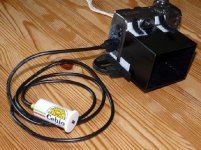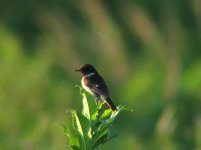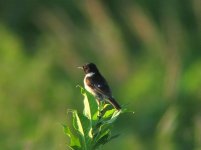Thanks, I'm very new to digiscoping and far from perfect.
Since I'm not getting good results with autofocus I followed a Swarovski suggestion and used manual focus. I use Av, put the camera focus to endless, zoom into 16x digital zoom and set the focus manually on the scope. Then I zoom out again and take the picture. For that I use the selftimer with initial delay 0, picture count set to 3 together with my electrical remote shutter on the USB connector (posted about it in another thread).
To impove the LCD, especially in bright sun, I soldered a light shield which is made from a raw plate for printed circuit boards. Its painted in black and mounted to the camera with Velcro strips.
A working auto focus setup (may be with macro) would be nice, because manual take much time - too long for some birds.
Attached a pic of the A590 with shield and USB shutter
Since I'm not getting good results with autofocus I followed a Swarovski suggestion and used manual focus. I use Av, put the camera focus to endless, zoom into 16x digital zoom and set the focus manually on the scope. Then I zoom out again and take the picture. For that I use the selftimer with initial delay 0, picture count set to 3 together with my electrical remote shutter on the USB connector (posted about it in another thread).
To impove the LCD, especially in bright sun, I soldered a light shield which is made from a raw plate for printed circuit boards. Its painted in black and mounted to the camera with Velcro strips.
A working auto focus setup (may be with macro) would be nice, because manual take much time - too long for some birds.
Attached a pic of the A590 with shield and USB shutter
Attachments
Last edited:






